Computex 2005 Early Bird Coverage: NVIDIA's G70, Athlon 64 BTX and more
by Anand Lal Shimpi on May 30, 2005 8:53 AM EST- Posted in
- Trade Shows
Tomorrow is the official start of this year's Computex, but as always we were able to get a sneak peak at the show before the floor actually opened.
With the show a day away from starting, we've already seen the first AMD BTX motherboard, a number of NVIDIA G70 graphics cards, an Intel motherboard that can be switched to an Socket-939 board by just purchasing a single card and the first hints of ATI's new multi-GPU chipset.
All of that and more in today's pre-show coverage.
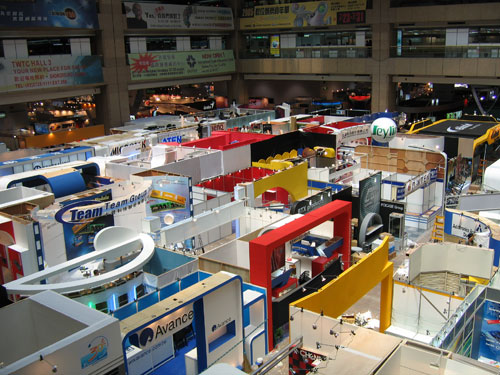
BTX Athlon 64 Motherboard
Intel's BTX standard continues to be fairly unsupported by the motherboard manufacturers we've met with. The motherboard and case manufacturers that we've met with have told us that by the end of this year BTX shipments will account for under 10% of their overall production. By the end of 2006, that figure is expected to rise to anywhere between 15 - 30%. If you're worried about the transition to BTX, you probably won't be forced to migrate until 2007 - 2008.
One concern we have all voiced is the lack of AMD motherboard designs for the BTX specification. Originally we worried that routing would be an issue thanks to the Athlon 64's on-die memory controller, but MSI put our fears to rest by bringing us the first Socket-939 BTX motherboard we've ever seen:
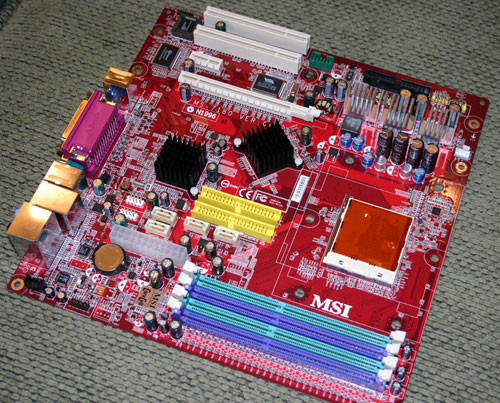
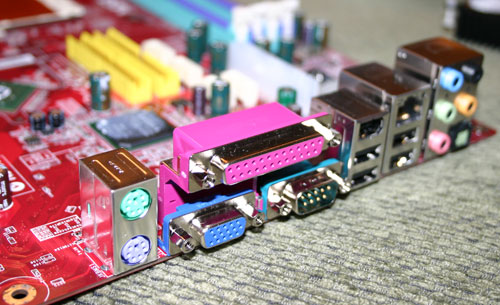
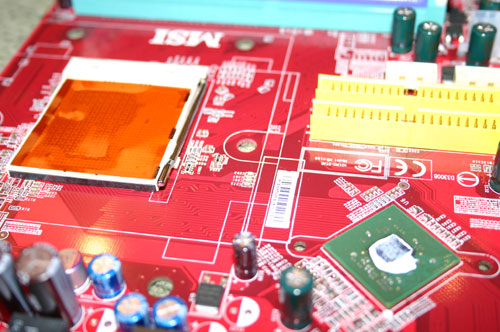
This particular board is based on NVIDIA's C51G integrated graphics chipset and adheres to the microBTX standard.
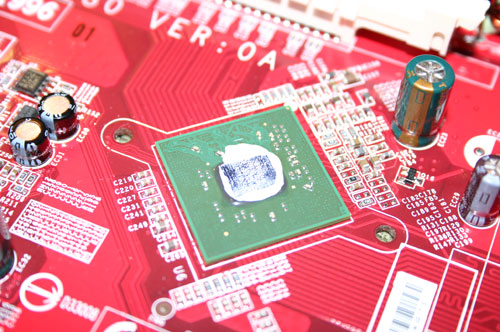
NVIDIA's C51G chipset - nForce4 + Integrated Graphics
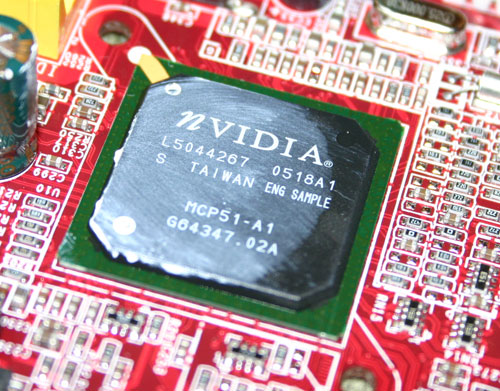
NVIDIA's C51G South Bridge, identical to what is on the nForce4 SLI Intel Edition
The board is due out for release by the end of this year, but it will be an OEM-only solution. MSI is demonstrating a total of two BTX motherboards at the show this year, which is a big increase from last year but in-line with the slow adoption rate we've seen for BTX.
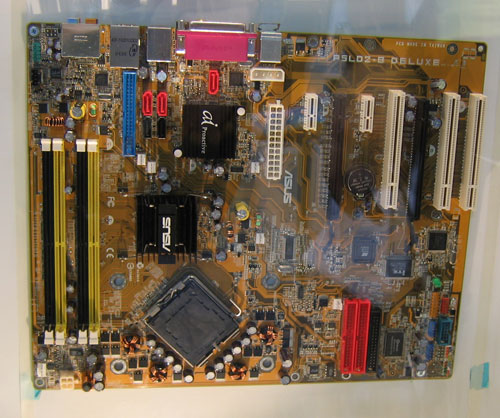
ASUS also had a few BTX motherboards at the show
The move to BTX is an expensive one for case manufacturers; the high costs of re-tooling and producing cases based on a new form factor have kept case manufacturers from embracing the new standard, especially given that ATX seems to be fulfilling users' needs just fine. The case manufacturers won't put much time and money behind BTX without widespread BTX motherboard availability, and motherboard manufacturers won't build BTX boards without widespread case availability. Like many new technologies in the PC industry, BTX presents both manufacturers with the classic chicken and egg scenario.










80 Comments
View All Comments
michaelpatrick33 - Monday, May 30, 2005 - link
Or, you could put a whole Linux distribution on that and have some fun!Of course another drawback is that it is a 32bit PCI card, so you will only get a maximum of 133mBps sustained to the south/north bridge thus limiting it further. Still way faster than any hard-drive though.
AndreasM - Monday, May 30, 2005 - link
Ah yes, use a ramdisk for the swap file so the computer doesn't slow down when swapping data to it from ram. Or not.#17 has a point though, this would be useful for Intelists that have moved to DDR2 and still have their old DDR-sticks around. Though it would probably be a better idea to just sell those sticks and buy more DDR2 :P
stevty2889 - Monday, May 30, 2005 - link
#12 I think using that gigabyte ram drive for the swap file would be an excelent use for it, good idea!Icehawk - Monday, May 30, 2005 - link
I want that RAM-Disk. Here's why - I have a gig of older DDR ram that is essentially worthless. How about using the Ram-Disk for your virtual memory swap file? Ah... now you see the possible benefit?:)
Tanclearas - Monday, May 30, 2005 - link
I thought the idea behind BTX was to improve cooling through better air flow. Why would they place the IDE cables directly in-line with the CPU, and the power and SATA cables all nearly in-line with the CPU?!Matthew Daws - Monday, May 30, 2005 - link
What I don't quite get with the solid-state drive is: Why not just increase the amount of ram you have, and let the O/S use it as it sees fit, either for a huge disk cache, or for applications if they need it. This should actually be faster, as the OS can intelligently decide what data to buffer in ram; and with 64-bit nearly mainstream, you don't have a 4GB limit.The only issue might be that you'll have to spend a lot more on RAM you want to put on your motherboard than the dirt-cheap stuff you'd put on the Gigabyte board; but surely 2GB of extra system ram would be better than a 4GB Ram-Drive?
mjz - Monday, May 30, 2005 - link
yea, maybe if they have 8 slots and ram is 50 dollars a gig.mattsaccount - Monday, May 30, 2005 - link
The solid state drive would also be useful for photoshop/video editing scratch disks, or for the windows page file.MDme - Monday, May 30, 2005 - link
hey, you can put winXP onto that ramdisk and just have that. I mean if you use that as your OS partition, it will rock. maybe use a minimal XP install without the bloat-ware...maybe even a 512mb swapfile there. (I wonder how fast will boot times be???)OR
just use the ramdisk as the swap file. that would still be a boost. (you won't have to worry about the volatile ram either)
AnnihilatorX - Monday, May 30, 2005 - link
2GB should be enough for just Windowbut if you want "a" game on it... 4GB is just enough